
The paintings "Bedroom in Arles" by Vincent van Gogh are iconic works of a brilliant master
"The Bedroom in Arles" is a famous painting in three versions, painted by Vincent van Gogh in 1888-1889. The canvas depicts a small room with two doors. Its cold, light-blue walls sharply contrast with a few everyday objects painted in vibrant colors, filling the room with bright hues. The furniture arranged around the perimeter creates empty space in the foreground, with a worn, peeling floor—a clear sign of modest living. The deliberately simple setting includes basic utensils on the vanity table and clothes hanging on open hangers. The viewer immediately notices perspective errors and disproportionate objects. The massive bed with its curved headboards appears excessively bulky and occupies a significant part of the canvas. The male portraits and Japanese prints hanging above it are tilted. The upper corner of the room, marked with blue paint, clearly indicates an incorrect shape of the living structure. The unnatural sensation is intensified by the illusionary effect. The viewer's attention seems to be drawn into a dizzying vortex of space, spiraling towards the optical center of the composition at the window. Despite being covered by green shutters, the window allows rays of blazing southern sunlight to enter and fill the room with light. Gradually, the viewer discovers other subtle hooks skillfully placed by the author.
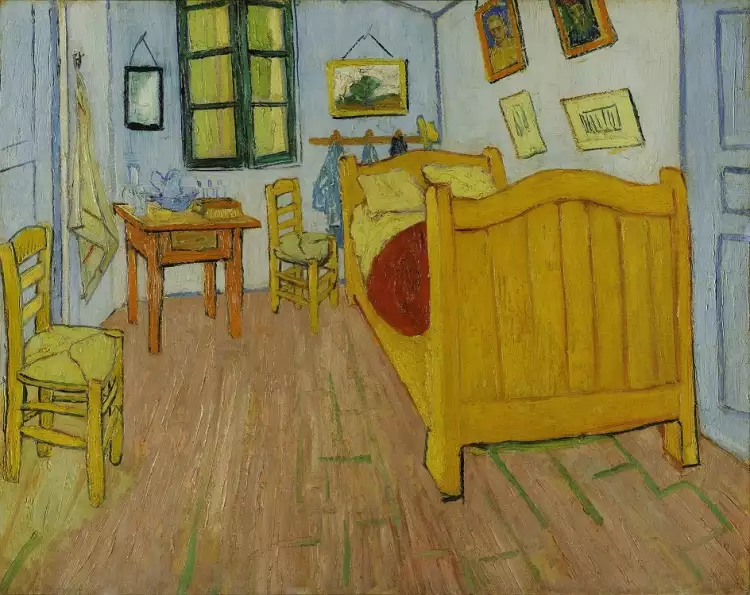 Vincent van Gogh. The paintings The Bedroom in Arles (first version), 1888
Vincent van Gogh. The paintings The Bedroom in Arles (first version), 1888
- Title of the painting: "The Bedroom in Arles" (French: La Chambre à Arles; Dutch: Slaapkamer te Arles).
- Artist: Vincent van Gogh (1853-1890).
- Year of creation: 1888-1889.
- Dimensions: 72.4 x 91.3 cm (first and second versions), 57.5 x 74 cm (third version).
- Style: Post-Impressionism.
- Genre: Domestic genre.
- Technique: Oil painting.
- Material: Canvas.
- Locations: Van Gogh Museum, Amsterdam, Netherlands; Art Institute of Chicago, Chicago, USA; Musée d'Orsay, Paris, France.
Vincent van Gogh was a brilliant Dutch artist of the 19th century who left a vivid mark in the art world. His short-lived artistic career, cut short by premature death, resulted in the creation of over two thousand works. Over the years, the majority of his works have been recognized as a pinnacle of painting by his contemporaries.
In 1888, Van Gogh moved to a small town in southern France, where he rented a dilapidated two-story house painted yellow on the outside. He depicted the interior of his room on the second floor in the painting "The Bedroom in Arles."
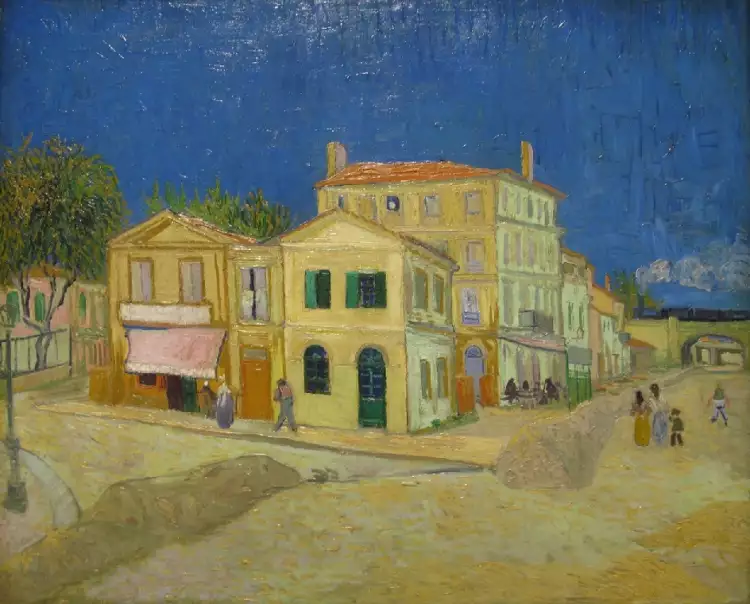 Vincent van Gogh. The paintings The Yellow House, 1888
Vincent van Gogh. The paintings The Yellow House, 1888
The first version of the artwork dates back to October 1888. During the same period, the artist sent sketches of "The Bedroom" to his brother Theo (Theodorus van Gogh) and Paul Gauguin, with whom he maintained active correspondence. In his letters, he explained his concept of preserving the minimalism of the room, conveying its style and nobility through color, evoking thoughts of relaxation and avoiding arousing the imagination.
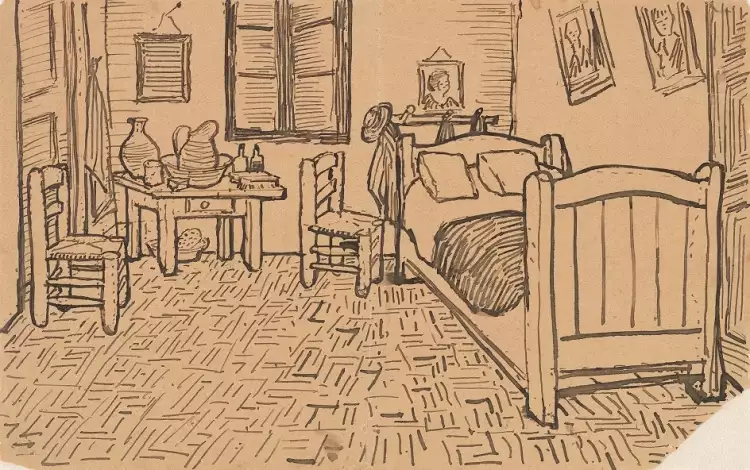 Vincent van Gogh. Sketch The Bedroom at Arles (sent with a letter to his brother Theo), 1888
Vincent van Gogh. Sketch The Bedroom at Arles (sent with a letter to his brother Theo), 1888
He provided detailed descriptions of the studies, specifying all the shades used in the work. Unfortunately, some colors on the canvas have faded over time. For example, the initially pale purple walls of "The Bedroom" have lost their red pigment and now appear blue.
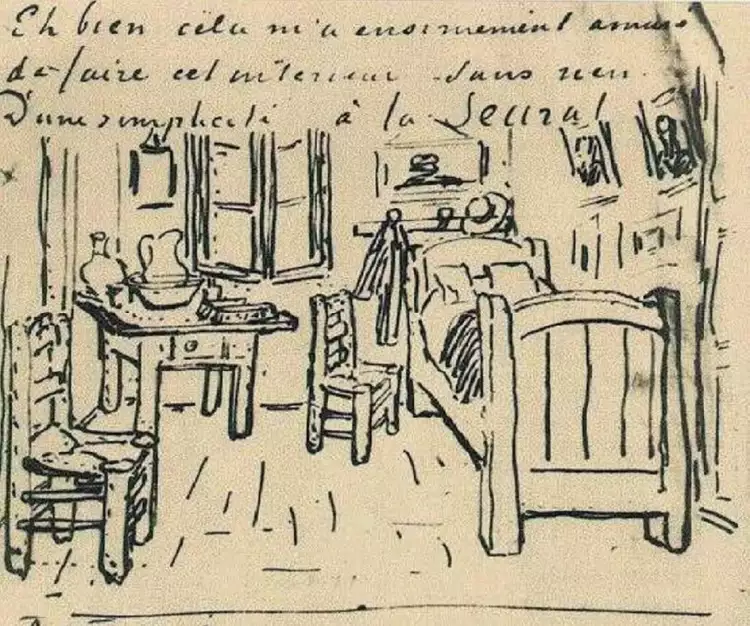 Vincent van Gogh. Sketch The Bedroom at Arles (from a letter to Paul Gauguin), 1888
Vincent van Gogh. Sketch The Bedroom at Arles (from a letter to Paul Gauguin), 1888
The main distinguishing feature of the entire series of "The Bedroom in Arles" is the elements of self-quotation. The master symbolically depicted other miniature paintings in the room. All of them are real existing works by the artist, but each version showcases different ones.
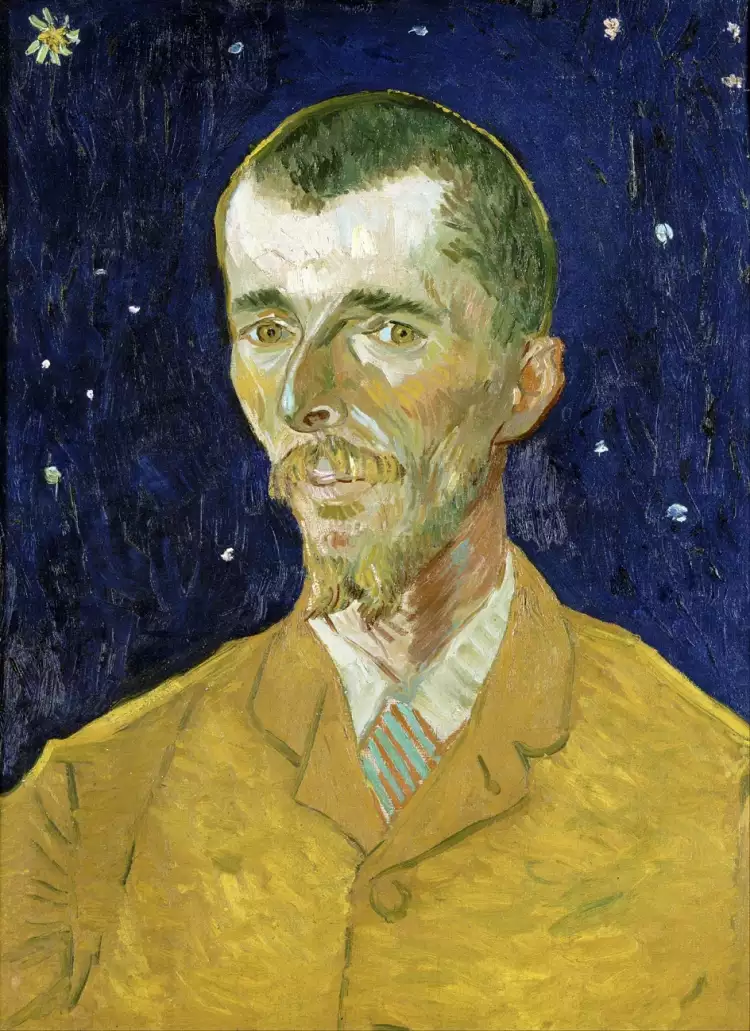 Vincent van Gogh. The painting Portrait of Eugène Beauchat, 1888
Vincent van Gogh. The painting Portrait of Eugène Beauchat, 1888
In the first version, on the right above the bed, Van Gogh placed portraits of his friends: Eugène Boch and Lieutenant Millet, whom he taught to draw. He placed two empty chairs opposite them, a symbolic attribute in the master's work associated with the absence and anticipation of a person. These objects seem to engage in a silent dialogue with the depicted individuals.
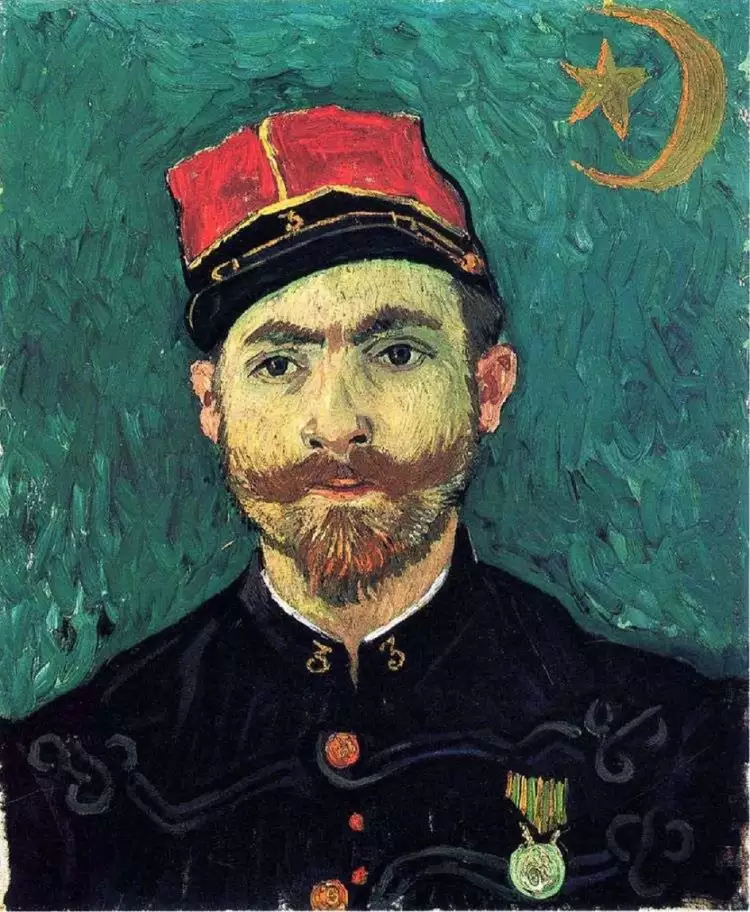 Vincent van Gogh. The painting Portrait of Paul Eugène Millet, 1888
Vincent van Gogh. The painting Portrait of Paul Eugène Millet, 1888
If the artist painted the first picture while being a happy person, then traces of his mental distress are reflected on the second canvas. He outlined all the objects, including individual floor tiles, with bold black contours. He also partially opened the shutters, which used to be closed tighter and evoked a sense of security.
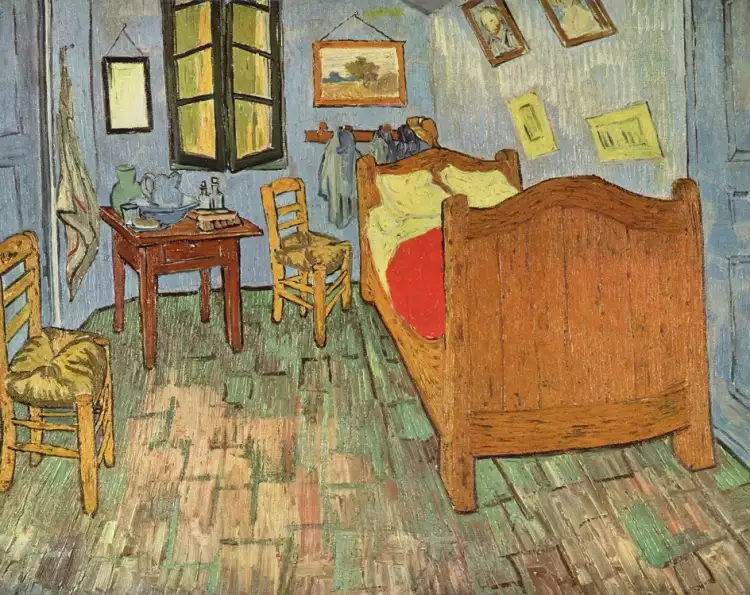 Vincent van Gogh. The painting The Bedroom in Arles (second version), 1889
Vincent van Gogh. The painting The Bedroom in Arles (second version), 1889
Instead of the images of his friends on the wall, a self-portrait of the artist appears. Next to it is a portrait of a girl, presumably Madame Ginoux, towards whom Van Gogh felt warm affection. He often painted her portraits even while in the sanatorium.
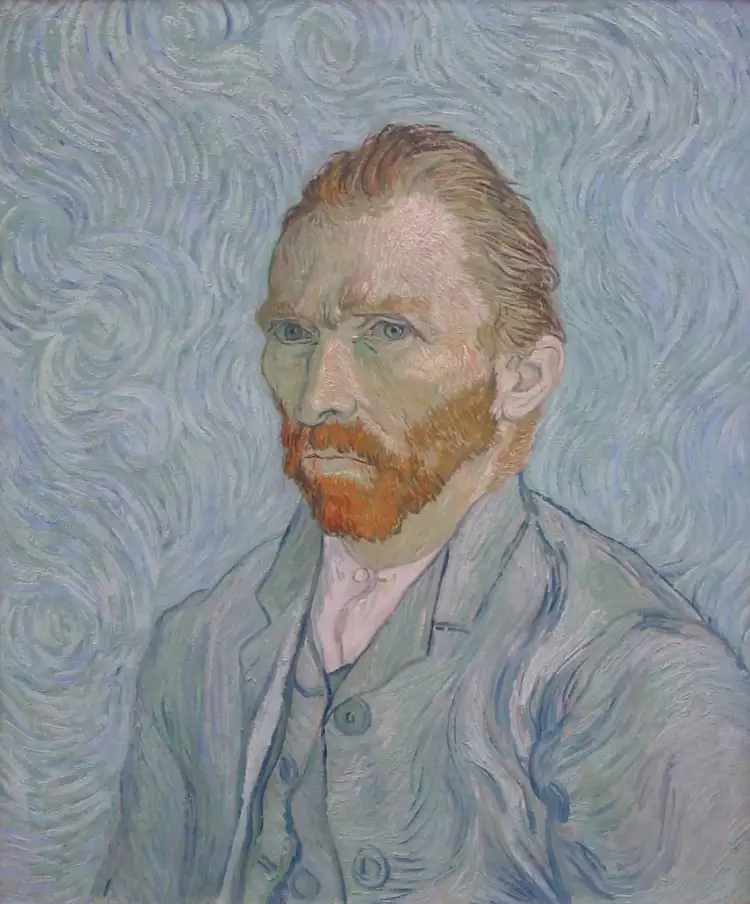 Vincent van Gogh. The painting Self-Portrait, 1889
Vincent van Gogh. The painting Self-Portrait, 1889
The landscape painting "Rocks and Oaks" positioned above the head of the bed, Van Gogh left in its place. This painting, created in the summer of 1888, was particularly favored by his brother and was associated with the artist's own life.
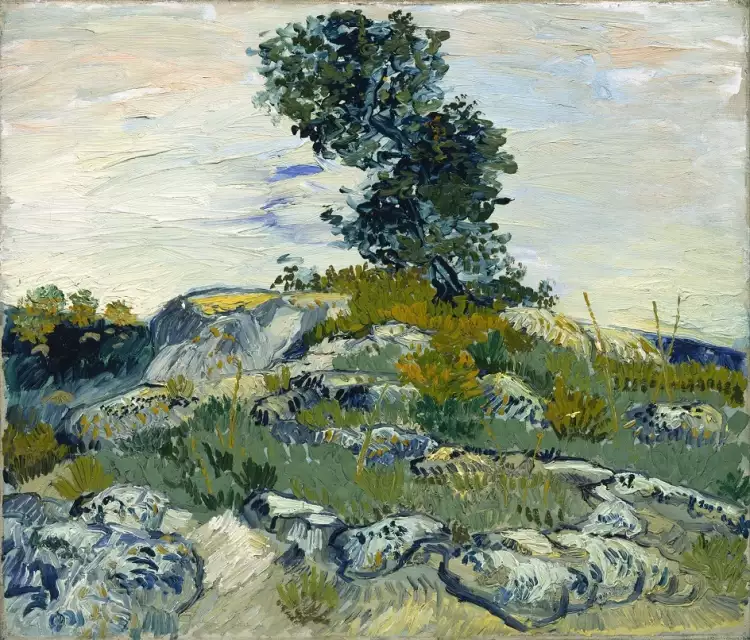 Vincent van Gogh. The painting Boulders and Oak, 1888
Vincent van Gogh. The painting Boulders and Oak, 1888
Van Gogh made a third copy of the painting "Bedroom in Arles" in the summer of 1889 for his mother, Anna Cornelia Carbentus, and his sister Wilhelmina, who lived in the Netherlands. The miniatures on this canvas are depicted with much more precision. In contrast to the previous version, here the viewer sees a different self-portrait of the artist and possibly a portrait of his mother, whose image he captured in a study for his brother. It is known that at that time Vincent was working on a family series. As an omen of impending death, a landscape with a crimson sunset appears at the head of the bed. Currently, it remains unidentified.
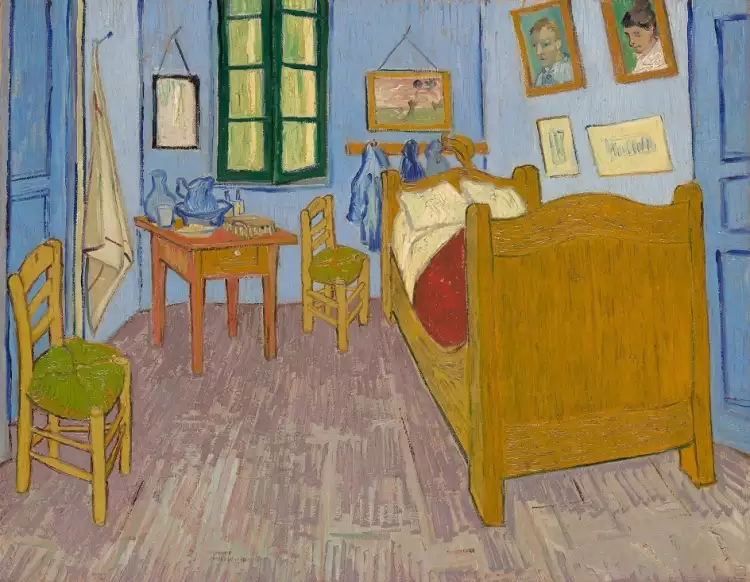 Vincent van Gogh. The painting Bedroom in Arles (third version), 1889
Vincent van Gogh. The painting Bedroom in Arles (third version), 1889
The only constant elements in all three works are the Japanese prints that inspired Van Gogh with their style and mood. He often drew on the aesthetics of Japan in his art and collected works by artists who lived in that country.
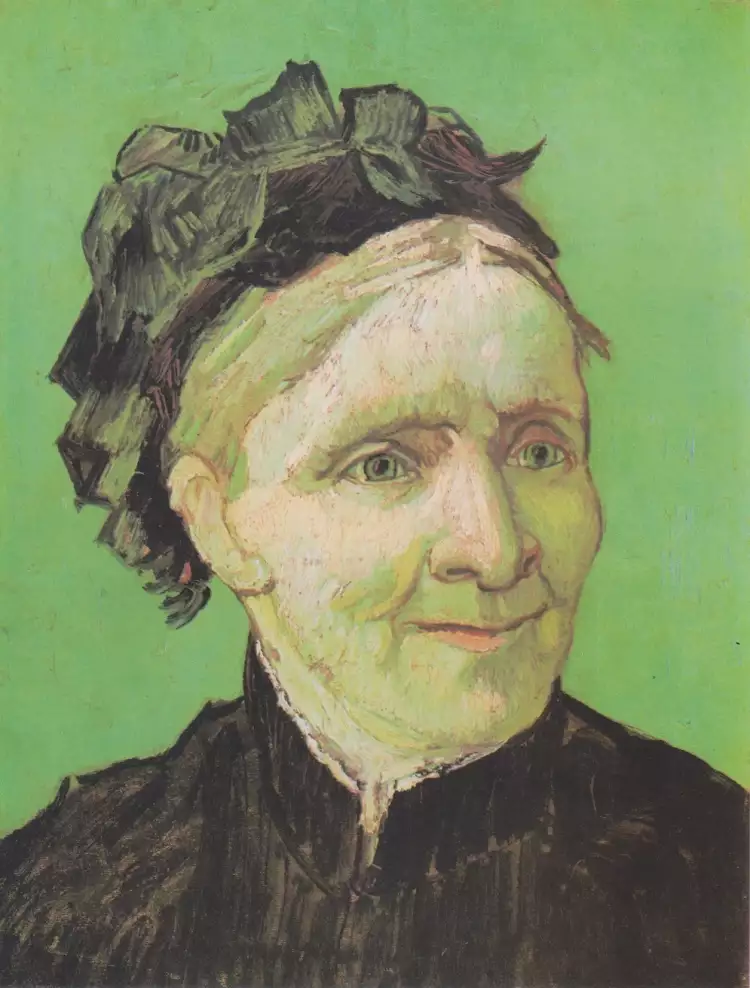 Vincent van Gogh. The painting Portrait of a Mother, 1888
Vincent van Gogh. The painting Portrait of a Mother, 1888
Vincent van Gogh considered the paintings "Bedroom in Arles" to be his best works. As a true rebel, disregarding any academic standards, he moved away from the idea that art must necessarily imitate the real world and introduced his contemporaries to a new painting style of Post-Impressionism.
 The National Order of the Legion of Honour
The National Order of the Legion of Honour  Naturalism in Painting: Naturalness and Photographic Accuracy of Reality
Naturalism in Painting: Naturalness and Photographic Accuracy of Reality  Meissen Porcelain: The History of the Manufactory
Meissen Porcelain: The History of the Manufactory  Innovative Skyscrapers Reshaping Urban Skylines
Innovative Skyscrapers Reshaping Urban Skylines 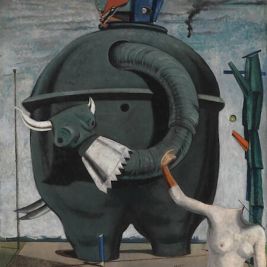 Modernism in painting - a different interpretation of reality
Modernism in painting - a different interpretation of reality  The most famous Orthodox icons
The most famous Orthodox icons  The Renaissance of Historic Tapestries
The Renaissance of Historic Tapestries 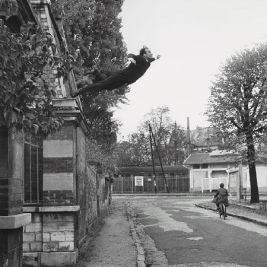 Performance art - provocative art with profound meaning
Performance art - provocative art with profound meaning  Academism is an authoritative, virtuoso, and conservative style
Academism is an authoritative, virtuoso, and conservative style  Post-Impressionism is a joyful and unconventional style in painting
Post-Impressionism is a joyful and unconventional style in painting